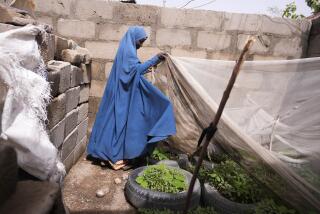Welfare Perception Skewed, Report Finds : Poverty: More than half of children younger than 6 in families officially classified as poor have at least one working parent, advocacy group says.
WASHINGTON — Contrary to the common perception of welfare families, more than half of all children under the age of 6 in families officially classified as below the poverty line live with at least one working parent, according to a New York advocacy group for poor children.
Of those 6 million poor children, 38% live with one or two parents who support their families only with earnings and not with public assistance, the National Center for Children in Poverty said in a report released Monday.
Another 20% scrape by with a combination of earnings and welfare payments, leaving no more than 42% to rely only on public support, the center said.
“We have to draw a detailed profile of child poverty in order to design new public policies,” said J. Lawrence Aber, director of the center, referring to the escalating national debate about how best to reform the welfare system.
The number of American children younger than 6 living in poverty increased from 1987 to 1997, rising from 5 million to 6 million--reflecting “an all-time high poverty rate of 26% for this vulnerable age group,” the report said.
In 1992, the poverty line was $9,137 for a family of two, $11,186 for a family of three and $14,335 for a family of four.
“The number of poor children under 6 grew from 3.4 million in 1972 to 6 million in 1992,” Aber said. “The significance of these figures for our society’s social landscape cannot be overstated because we will pay the costs of these poverty rates for the next two decades.”
For children, the effects of poverty may cause them to “suffer severe consequences concerning their physical and mental health and their psychological development,” he said.
“The distribution of poverty in American families throughout urban, rural and suburban areas is not always predictable, and the causes and solutions are not simple,” Aber said. “Many of these facts are either unknown or misunderstood.
“We have to keep looking at the children and learning what they need and what will help them survive, develop, learn and become healthy, self-sufficient members of society,” he added. “We need to document and comprehend the complex and ever-dynamic demographic characteristics of child poverty as we reform welfare.”
The numbers in the report were based on the center’s analysis of the Census Bureau’s 1993 March Supplement to the Current Population Survey and information from the House committee on Ways and Means’ “Overview of Entitlement Programs: 1994 Green Book.” The report was funded by the Ford Foundation and the Carnegie Corp. of New York.
More to Read
Sign up for Essential California
The most important California stories and recommendations in your inbox every morning.
You may occasionally receive promotional content from the Los Angeles Times.










